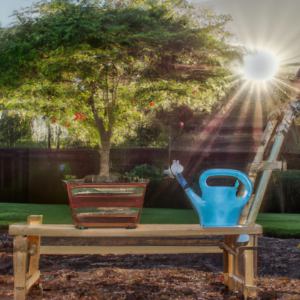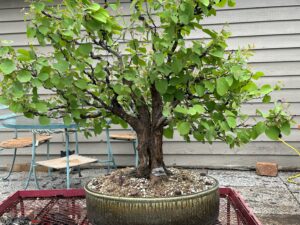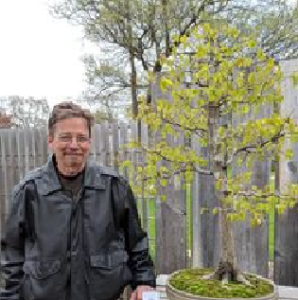Tree of the Month – Dawn Redwood (Metasequoia glyptostroboides)

The Dawn Redwood is another “living fossil”, an ancient tree that knew the dinosaurs. Scientists believed It was once one of the most widespread tree species in the Northern Hemisphere. Fossil remains were identified in North America, Asia and as far north as Greenland (which was almost tropical back then) and they had concluded that it must have been extinct for millions of years.
Then in 1941 it was discovered growing in the Shui-hsu Valley of the Sichuan province of China. Villagers in the Sichuan region were using the foliage for cattle fodder and the wood for bridges and other construction. The dawn redwood tree, thought to have been extinct for 20 million years now had living representatives known to the world. A living testimony to the surprises still to be found in nature.
The only living species in its genus, the dawn redwood is a deciduous conifer tree, shedding leaves and slender twigs annually. It is also the smallest of the three redwood/sequoias: the Coastal Redwood, the Giant Sequoia and the Dawn Redwood.
The dawn redwood is often confused with the common bald cypress. The needles on the dawn redwood are opposite, meaning they are positioned directly across from each other on the stem, while the bald cypress needles are alternate (staggered).
In nature it grows in a pyramidal shape, maturing into a more rounded crown. The bright green, feathery needled foliage leaves turn orange-brown or reddish-brown in the fall before falling off. The bark is green in the 1st year, but quickly turns gray to brown. After a few years, a red-brown bark forms, which peels off in narrow strips in older trees and the bark becomes deeply fissured as the tree matures.
INTERESTING FACT: To the Chinese people, the dawn redwood is second only to the panda as a conservation icon.
STYLING: Formal or informal upright (natural growth habit), clump, slanting and forests.
PLACEMENT: They are well suited for growing outdoors as long as they are given plenty of sunlight and ample humidity in the summertime. In winter your tree will require protection from extreme cold and frost during the dormant season.
WATERING: Do not allow this tree to go without ample moisture as it is not drought tolerant. But, take care on the other hand not to over water them because this might lead to root rot. Putting your tree on a drip tray filled with pebbles will add a little humidity. Allowing the tree to dry out even once can be enough to kill it.
FERTILIZING: Since this is one of the fastest growing trees available, if you fertilize the tree, do so cautiously. High nitrogen fertilizer should only be used in spring, then every week during the growing season in small doses diluted with water so the mixture is about one-half of the usual strength. Too much fertilizer will cause the tree to produce leggy, unattractive shoots.
PRUNING: Dawn redwoods produce a lot of new buds, especially near scars from pruning. All buds you don’t need should be removed immediately. Twigs with long internodes should be pruned in spring before the new buds open. You may have to cut back the tree a couple times during the growing season. A strong pruning of the tree promotes denser branching. New buds emerge everywhere, even more than sometimes desired.
WIRING: Using wire to shape this bonsai is possible when the tree is dormant from early winter to early spring starting in November after the leaves fall. Check every few weeks that the wire does not bite in because this can happen quickly due to the strong growth of the trees. Branches can be shaped but care must be taken as they can be quite brittle. Working with guy wires to lower the branches is often a better solution.
REPOTTING: The roots of the dawn redwood grow quickly and aggressively. Therefore, repotting usually has to be carried out more frequently than with other conifers. Since the strongly growing roots fill up the pot quickly and soon push the rootball up in the pot, considerable root pruning is inevitable each time the redwoods are repotted. It prefers a moist to even wet bonsai soil. The tree should be repotted in early spring.
PESTS AND DISEASES: Dawn redwoods are rarely infested by pests and have no significant diseases. It’s just another good old tough tree. PROPAGATION: They can be propagated from seed and cuttings. Air-layering is also possible.
Written by Charlotte Field
References: Bonsai Empire, The Arbor Day Foundation, Save the Redwoods League, Vanessa Richins Myers, Bonsaischule Wendorf



